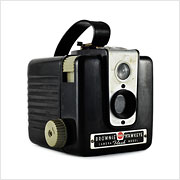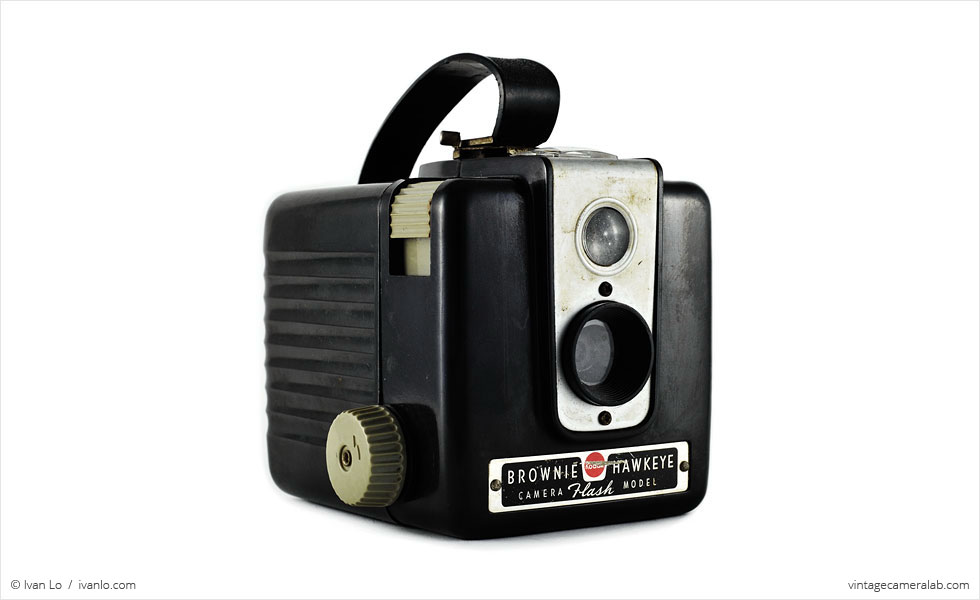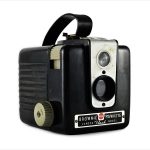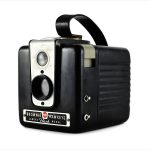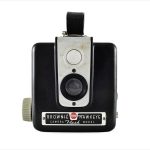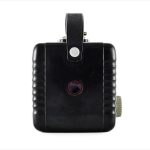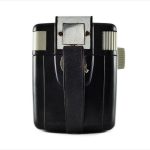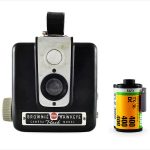Kodak Brownie Hawkeye Specifications
| Manufacturer: | Eastman Kodak Company |
| Origin: | USA |
| Made in: | Rochester, NY, USA |
| Introduced: | 1949 |
| Type: | Box, Viewfinder |
| Format: | 620 Film |
| Dimensions: | 8.8 x 9.4 x 11.5 cm |
Kodak Brownie Hawkeye Overview
The Kodak Brownie Hawkeye is a simple plastic box camera produced from the late 1940s to the early 1960s. In addition to being made in its flagship factory in New York, the Brownie Hawkeye was also manufactured in Canada and France by its international subsidiaries. Over the years, there have been a significant number of Kodak cameras called the “Brownie;” this Hawkeye is one of the most popular models ever to bear the name.
Like most box cameras, the Hawkeye is very simple. It has a basic, fixed-focus meniscus lens with a focal length of roughly 75mm and a fixed aperture of f/16. Pressing the textured grey button on the user’s right-hand side triggers the spring-loaded rotary shutter which fires at approximately 1/30 seconds while pulling up the smooth grey button engages Bulb mode which allows the shutter to stay open as long as the shutter button is depressed.
A waist-level viewfinder can be found on the top of the camera just in front of the plastic handle. At the base of the handle is a metal switch that allows the camera to be taken apart to load and unload 620 film. The film advance knob can be found under the shutter button and a red window on the back of the camera allows the photographer to monitor the number of exposures that have been made. This later “flash” model also allows external proprietary flash units to be mounted on the side of the camera.
The Brownie Hawkeye had an original retail value of $5.50 (approximately $53 in today’s money) when it was introduced. Luckily for me, it was thrown in for free when I purchased a small lot of cameras from a nice middle-aged woman that included a M.I.O.M. Photax III, an Agfa PD16 Clipper, a Spartus 120, a Polaroid Big Shot, and a Kodak No. 2a Folding Pocket Brownie from 1910.
Find your very own Kodak Brownie Hawkeye on eBay.
McKeown, James M. and Joan C. McKeown’s Price Guide to Antique and Classic Cameras, 2001-2002. (Grantsburg, WI, USA: Centennial Photo Service, 2001), p 329.
